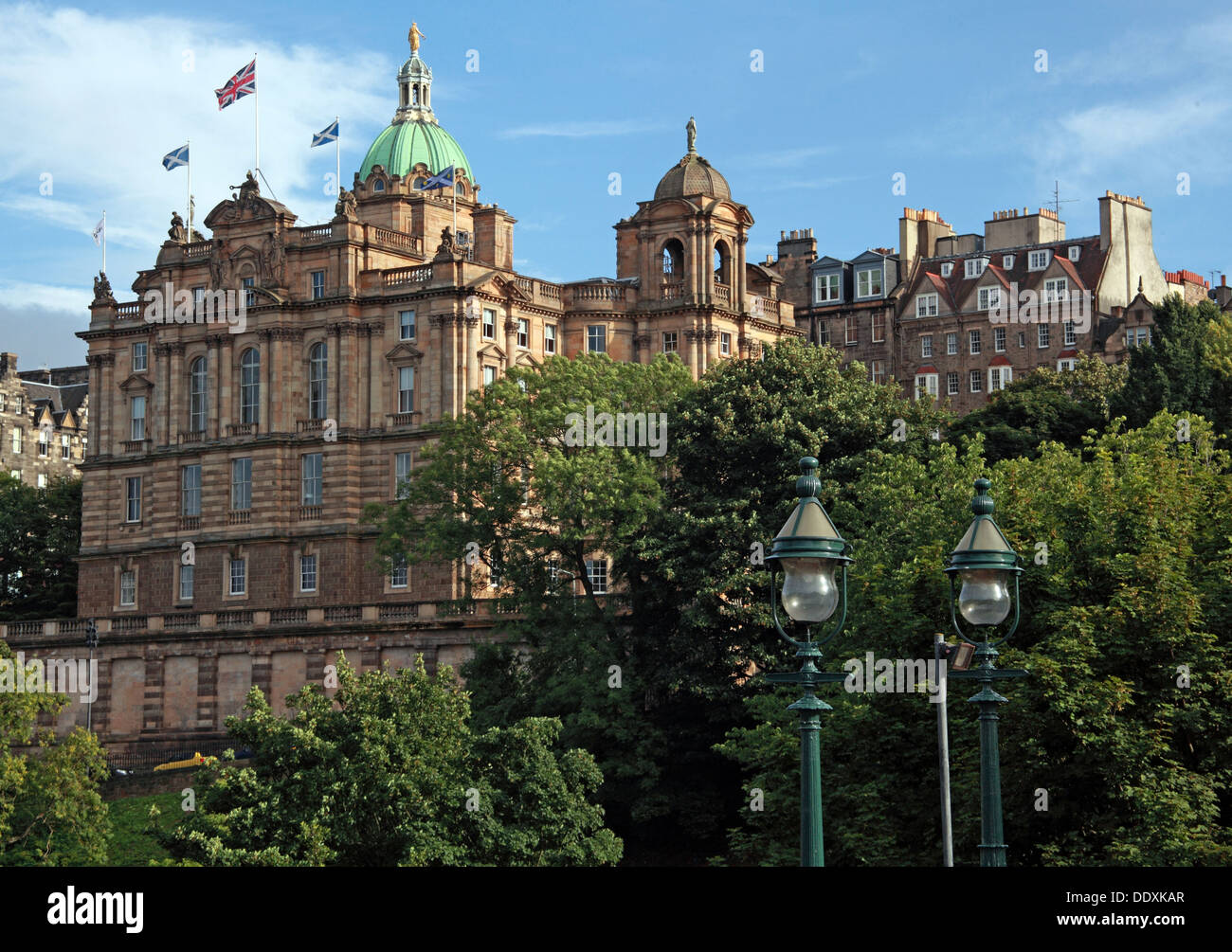Bank of Scotland office headquarters, The Mound, Edinburgh, Scotland, UK

Image details
Contributor:
Tony Smith / Alamy Stock PhotoImage ID:
DDXKARFile size:
50.9 MB (2.5 MB Compressed download)Releases:
Model - no | Property - noDo I need a release?Dimensions:
5028 x 3540 px | 42.6 x 30 cm | 16.8 x 11.8 inches | 300dpiDate taken:
31 August 2013Location:
The Mound, Edinburgh, Scotland, UK EH1 1YZMore information:
This landmark building has been a distinctive feature of the Edinburgh skyline for more than 200 years. It was built in 1806 as the Head Office of Bank of Scotland. Today it is also the registered office and Scottish Headquarters of Lloyds Banking Group. In 1796, at the Bank of Scotland's 100th AGM, its directors decided to commission a purpose-built head office. It took some time to find a suitable location, due to the cramped nature of Edinburgh's Old Town. Eventually, in 1800, the site at the top of the Mound was purchased from Edinburgh Town Council. It cost £3, 500. Construction started soon after, to a design by Robert Reid and Richard Crichton. These were former pupils of the celebrated architect Robert Adam. Their building was a detached Georgian-style villa, topped by a shallow saucer dome. It was completed in August 1806. The Challenge of the Mound Straddling Edinburgh's Old and New Towns, the site posed grave challenges for the builders. Firstly, there was a steep drop of 16 metres from front to back. A more serious issue was instability: the 'earthen Mound' (as it was known) was a man-made hill, created from the earth excavated for the New Town. The site had also been a rubbish dump in the past, and contained vast quantities of household waste! Consequently, there was a serious risk of slippage. To overcome this, a substantial retaining wall was constructed on the north side of the building. By the 1850s, the building was proving unsatisfactory. It was now too small for the Bank's growing business. There had also been complaints that it looked stark and ugly when viewed from Princes Street. Indeed, the famous judge Lord Cockburn described it as a 'prominent deformity'. Seeking to resolve these issues, several architects were invited to submit plans for extending and improving the building. The directors eventually selected David Bryce. His solution was to add full-height wings to the east and west, tied back to the original building.